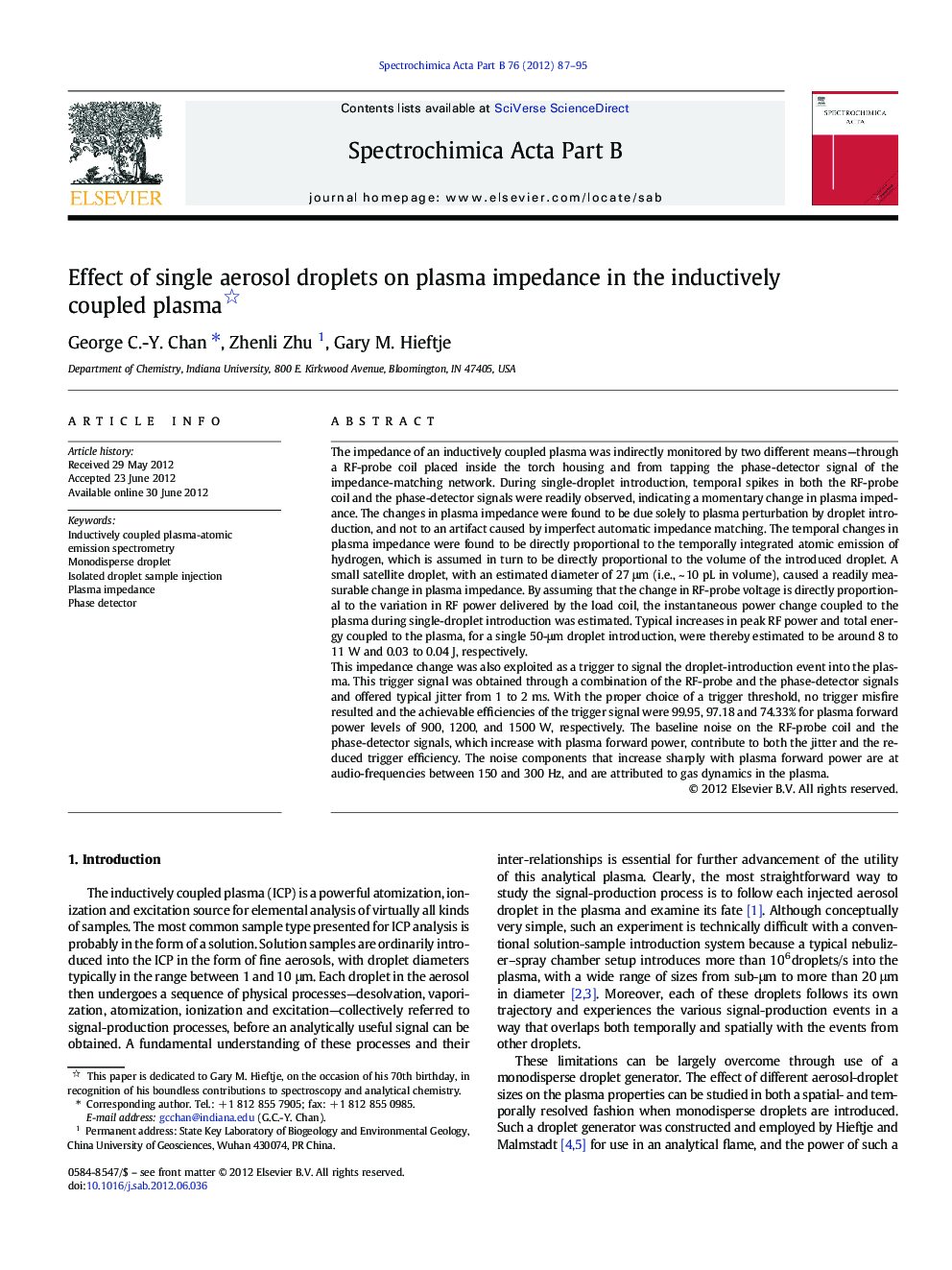| کد مقاله | کد نشریه | سال انتشار | مقاله انگلیسی | نسخه تمام متن |
|---|---|---|---|---|
| 1239807 | 1495723 | 2012 | 9 صفحه PDF | دانلود رایگان |

The impedance of an inductively coupled plasma was indirectly monitored by two different means—through a RF-probe coil placed inside the torch housing and from tapping the phase-detector signal of the impedance-matching network. During single-droplet introduction, temporal spikes in both the RF-probe coil and the phase-detector signals were readily observed, indicating a momentary change in plasma impedance. The changes in plasma impedance were found to be due solely to plasma perturbation by droplet introduction, and not to an artifact caused by imperfect automatic impedance matching. The temporal changes in plasma impedance were found to be directly proportional to the temporally integrated atomic emission of hydrogen, which is assumed in turn to be directly proportional to the volume of the introduced droplet. A small satellite droplet, with an estimated diameter of 27 μm (i.e., ~ 10 pL in volume), caused a readily measurable change in plasma impedance. By assuming that the change in RF-probe voltage is directly proportional to the variation in RF power delivered by the load coil, the instantaneous power change coupled to the plasma during single-droplet introduction was estimated. Typical increases in peak RF power and total energy coupled to the plasma, for a single 50-μm droplet introduction, were thereby estimated to be around 8 to 11 W and 0.03 to 0.04 J, respectively.This impedance change was also exploited as a trigger to signal the droplet-introduction event into the plasma. This trigger signal was obtained through a combination of the RF-probe and the phase-detector signals and offered typical jitter from 1 to 2 ms. With the proper choice of a trigger threshold, no trigger misfire resulted and the achievable efficiencies of the trigger signal were 99.95, 97.18 and 74.33% for plasma forward power levels of 900, 1200, and 1500 W, respectively. The baseline noise on the RF-probe coil and the phase-detector signals, which increase with plasma forward power, contribute to both the jitter and the reduced trigger efficiency. The noise components that increase sharply with plasma forward power are at audio-frequencies between 150 and 300 Hz, and are attributed to gas dynamics in the plasma.
► Single water-droplet introduction on the plasma impedance of an ICP was monitored.
► A single 10-pL droplet causes a readily measurable change in plasma impedance.
► Change in plasma impedance is directly proportional to droplet volume.
► Change in peak RF power and total energy coupled into the plasma was estimated.
► Noise power spectra of RF-probe coil and phase detector signals were computed.
Journal: Spectrochimica Acta Part B: Atomic Spectroscopy - Volume 76, October 2012, Pages 87–95